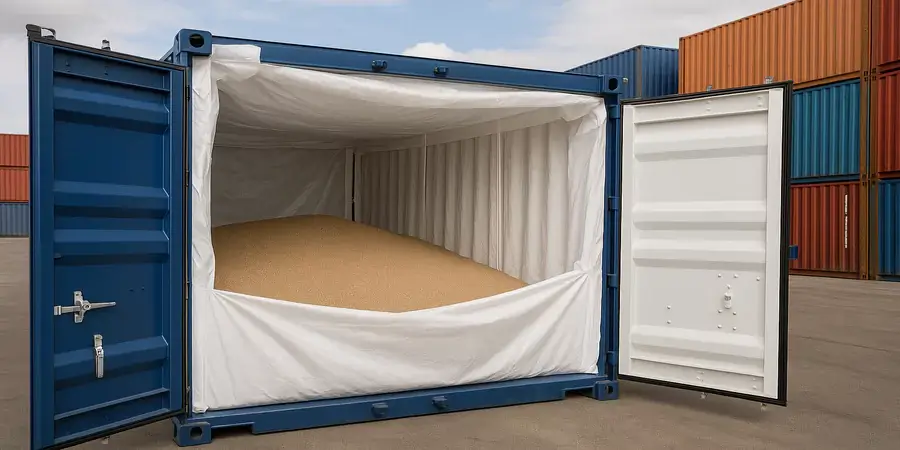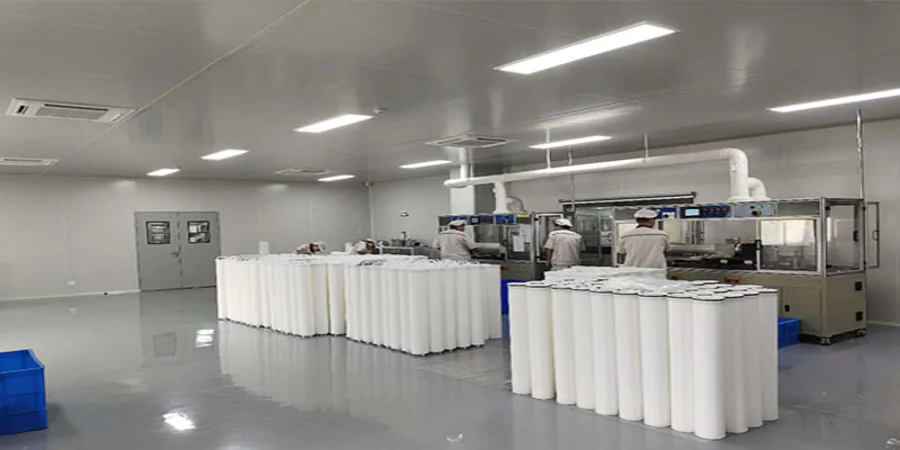In global trade, the shipping of dry bulk goods demands precision, safety, and protection from environmental factors. Whether it’s minerals, grains, powders, or chemicals, cargo must arrive intact and uncontaminated. Without adequate shielding during international transport, materials can be compromised by moisture, contamination, or loss in transit. Over time, logistics teams have adopted container liners to overcome these challenges and support consistent product quality from origin to destination. These liners form a secure internal barrier inside standard shipping containers, adapting to different cargo types and shipping conditions. In many cases, they are used alongside durable PP bags for heavy-duty packaging to reinforce cargo protection across multiple layers. Keep reading to learn how container liners reduce risk, streamline compliance, and enhance cargo integrity throughout the supply chain.
Reducing Moisture Exposure Across Long Distances
Moisture remains a persistent risk when transporting dry bulk cargo, especially over ocean routes where containers are exposed to changing climates and fluctuating humidity. Steel containers are susceptible to condensation buildup, which forms on walls and ceilings and drips onto the cargo during transit. Without proper protection, this moisture can spoil food-grade ingredients, damage powders, and cause clumping or microbial growth in otherwise dry goods.
Container liners act as a primary line of defense against these effects. They are manufactured from multi-layered films or coated woven materials that block vapor and protect against condensation ingress. Some variants include built-in vapor barriers or desiccant pockets that absorb humidity and stabilize the container’s internal climate.
When applied correctly, liners wrap the interior walls, ceiling, and floor of a container, creating a sealed micro-environment that separates the cargo from any external elements. This not only prevents water damage but also safeguards the texture, purity, and usability of the cargo upon arrival. Especially for industries dealing with powdered chemicals, fertilizers, and grains, avoiding even minor moisture exposure can mean the difference between accepted or rejected shipments.
Ensuring Clean Handling and Contamination Prevention
In dry bulk logistics, cleanliness is a non-negotiable standard, particularly when transporting food ingredients, pharmaceuticals, or high-purity chemicals. Traditional containers are reused frequently, and while they undergo cleaning, residues from previous loads can linger. Even microscopic contaminants or rust can jeopardize entire shipments.
Container liners eliminate this risk by creating a clean, disposable barrier between the cargo and the container. Each liner is used only once, ensuring that no residual materials compromise the quality of the new load. This is critical when transitioning between different product types or sensitive compounds where cross-contamination is unacceptable.
Industries that ship sugar, starches, polymers, or pet food often rely on food-grade liners with certifications for purity and material safety. These liners are made from virgin materials and tested for trace elements, ensuring compatibility with health and safety regulations. Additionally, anti-static liners are often used when handling fine powders that require protection from both contamination and electrostatic hazards.
By sealing off the cargo from its surroundings, liners support cleaner operations and help businesses comply with stringent international health and trade standards. This protection plays a crucial role in avoiding claims, delays, and reputational risk associated with contaminated cargo.
Containing Bulk Materials and Minimizing Loss
Bulk cargo shipments are prone to spillage, product shift, and handling-related loss—especially during loading and unloading. When dealing with tons of free-flowing material, even a small percentage of waste can result in significant cost increases over time. Container liners are designed to minimize this by offering stable, tailored containment.
Form-fit liners, baffled liners, and spout-equipped models ensure that bulk goods remain well-positioned and protected from movement during transit. These designs reduce air pockets and cargo shifting, which can lead to breakage, leakage, or material compaction. Properly installed liners also prevent product buildup against container corners, maximizing discharge efficiency.
Discharge options include gravity-fed spouts or integrated sleeve systems, which allow for controlled release of materials without spillage. This reduces the need for manual handling and improves unloading times. Additionally, by maintaining a consistent cargo shape and volume, liners support better container optimization and space utilization.
For materials like cement, resins, or crystalline powders, avoiding fragmentation or material separation during shipping is essential. Liners help stabilize the cargo and deliver more consistent outcomes from source to destination, enhancing product usability and preserving volume.
Accelerating Turnaround and Reducing Operational Costs
Cleaning and preparing containers between shipments can be time-consuming and expensive. When switching between incompatible cargo types, containers must undergo thorough sanitation, especially in sectors governed by strict hygiene protocols. Liners reduce or eliminate this need, offering a disposable, protective layer that simplifies container reuse.
By using liners, companies can bypass post-shipment washing, avoid delays in container redeployment, and minimize the use of water and cleaning chemicals. This lowers labor costs and shortens the turnaround time between shipments, increasing fleet efficiency and reducing total logistics spend.
Furthermore, liners reduce the need for secondary packaging. Traditional shipments may require drums, sacks, or cartons to secure cargo within the container, especially for granular or powdered materials. With container liners, cargo can be loaded directly into the lined container, eliminating the extra cost and bulk associated with other packaging formats.
For exporters and freight handlers, these efficiencies translate into stronger profit margins and more reliable delivery schedules. Liners align with modern shipping practices that prioritize speed, flexibility, and waste reduction while maintaining cargo integrity throughout the supply chain.
Adapting to Cargo Diversity and Global Compliance
One of the reasons container liners are widely adopted is their ability to adapt to different types of bulk goods and shipping requirements. From agricultural products and chemical powders to industrial minerals and foodstuffs, liners can be customized to meet the exact material and regulatory needs of each shipment.
Various features such as UV resistance, anti-static coatings, breathable membranes, and heavy-duty fabrics allow liners to serve multiple sectors without compromising on protection. Some liners are designed for top-filling with pneumatic systems, while others cater to conveyor loading or front-fill operations.
These liners also help businesses meet compliance standards across different countries and markets. International transport often involves navigating a complex web of health, safety, and environmental regulations. Using certified liners reduces the risk of customs rejection or product recall and demonstrates a commitment to best practices in cargo handling.
As global trade grows more complex, so does the demand for packaging and protection systems that can meet a wide range of operational, legal, and safety criteria. Container liners offer this versatility, making them an essential part of modern dry bulk logistics.
The role of protective packaging in shipping has expanded beyond just containment—it’s about preserving product quality, reducing risk, and ensuring safe delivery across borders. Container liners meet these needs by offering secure, clean, and adaptable solutions for businesses moving dry bulk goods internationally.
















